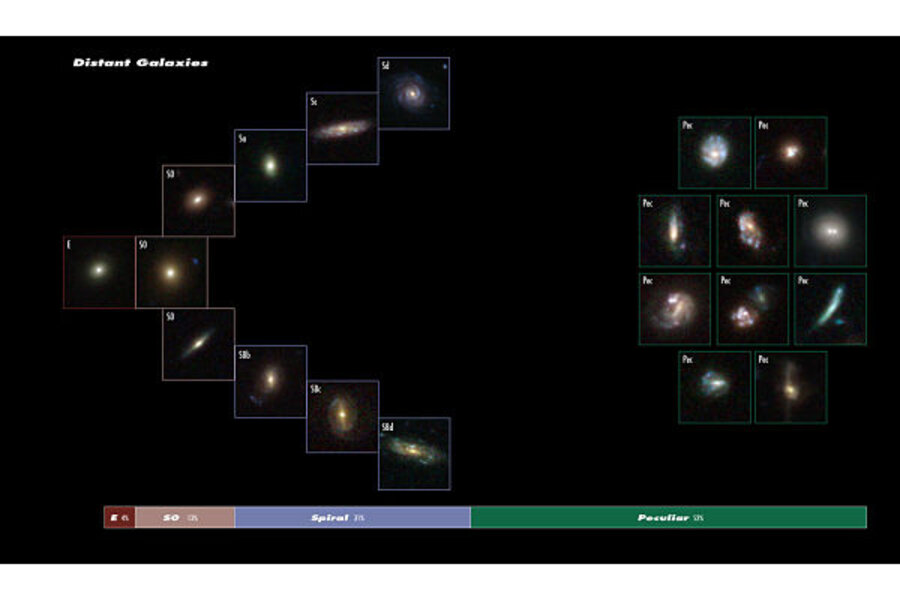Too early for Census results? Not if you're interested in galaxies!
The past six billion years of the universe's 13.8-billion-year history may have been more exciting than people thought.
If an international team of astronomers is correct, galaxy collisions and mergers happened far more frequently during that period than previous research has indicated.
The team, led by Paris Observatory astronomer Francois Hammer, found that 6 billion years ago, the universe contained far more "peculiar" galaxy shapes than appear in more recent times. In effect, the population of these oddballs declined at the same time the proportion of spiral galaxies like the Milky Way increased significantly.
The farther out in space you look, the older the objects are, because light travels at a constant speed. The team based its results on images of 148 galaxies whose distances correspond to the universe as it was about 6 billion years ago. And the group examined images of 116 local galaxies. The images the astronomers used to came from the Sloan Digital Sky Survey and NASA's Great Observatories Origins Deep Survey.
The results: Some 6 billion years ago, peculiar-shaped galaxies held the majority, at some 52 percent of the galaxy types in the sample. Spirals accounted for only 31 percent. Today, spirals make up some 72 percent of the sample, versus 10 percent for the peculiars. The proportion of the population in each sample accounted for by elliptical galaxies and spiral-elliptical hybrids remained virtually constant.
The dramatic drop in the number of peculiar galaxies was a surprise, according to Rodney Delgado-Serrano, a member of the team and the lead author of one of two papers reporting the results in a recent issue of the journal Astronomy and Astrophysics. You can find a plain-English version of the results here.
The results not only suggest that mergers and collisions, which would have led to the cosmic population shift, occurred more frequently more recently than previously thought. It also suggests mergers between peculiars and spirals – if both parties are rich in the gases from which stars form – appear to lead to the formation of large spiral galaxies, rather than ellipticals. In effect the disrupted disk rebuilds itself around its nucleus. That could be one reason why the local universe hosts so many spirals, the team suggests.






